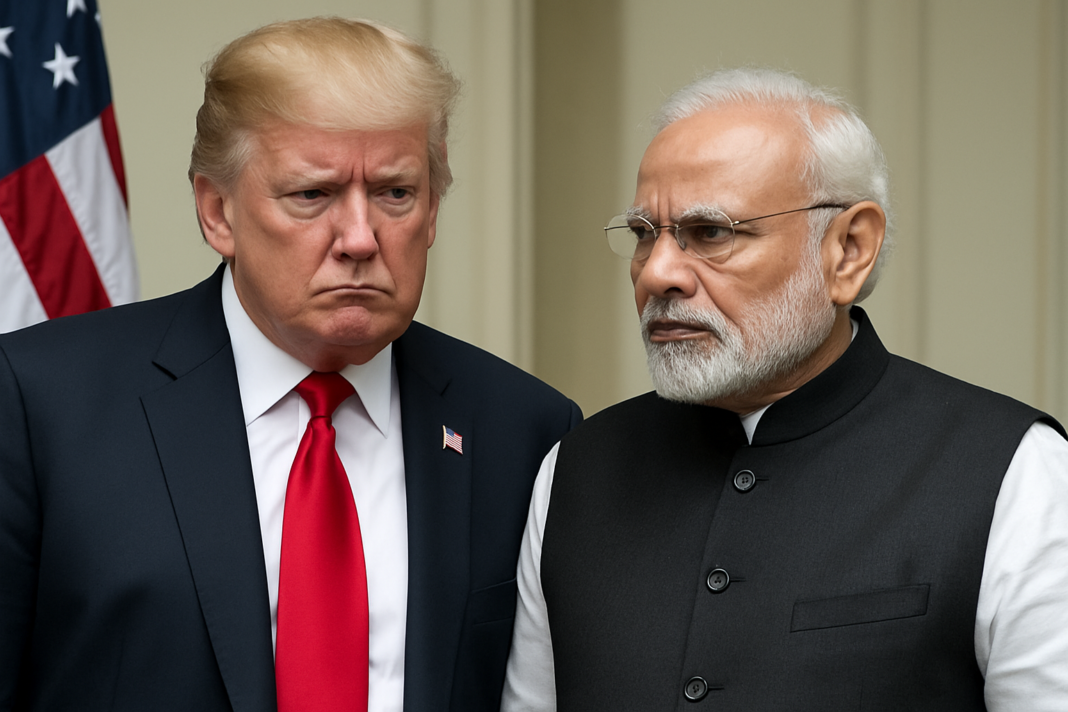Trump’s Deadline Ends, 50% Tariffs Now in Force
The deadline set by US President Donald Trump for India to face additional import duties has officially expired, triggering a sharp escalation in trade tensions. From August 27, all eligible Indian products entering the United States will now face a 50 per cent tariff. The additional 25 per cent hike, announced earlier this month, comes on top of an already existing 25 per cent duty. The move is framed as Washington’s response to New Delhi’s continued purchase of Russian oil, a decision the US describes as undermining Western efforts to restrict Moscow’s energy trade amid the Ukraine war.
According to a draft notice by the US Department of Homeland Security, the increased tariffs apply to goods “entered for consumption, or withdrawn from warehouse for consumption” after the deadline. While many exporters anticipated a last-minute resolution, five rounds of trade negotiations over recent months failed to bridge the gap.
India Responds With Defiance, Modi Calls for Swadeshi
Prime Minister Narendra Modi, addressing a gathering in Ahmedabad on Monday, reacted strongly to the US decision. He emphasized that India would “withstand external pressure” and reaffirmed that the government’s priority remained with farmers, cattle-rearers, and small-scale industries, all of whom are most vulnerable to international economic disruptions.
“For me, the interests of farmers, cattle rearers, and small-scale industries are paramount. Pressure on us may increase, but we will bear it all,” Modi said.
During a subsequent address in Gujarat on Tuesday, the Prime Minister urged citizens to embrace a swadeshi spirit, clarifying that the origin of investment capital mattered less than the fact that Indian labour and skill powered the nation’s growth. His remarks highlight India’s strategy to double down on self-reliance while seeking alternative markets beyond the United States.
Exporters Brace for Fallout, Explore Alternative Markets
Indian exporters are preparing for a potential drop in US orders following the steep duties. According to officials cited by Reuters, financial aid measures may be extended to affected industries, and companies are being encouraged to look toward China, Latin America, and the Middle East as substitute markets.
The tariff shock has come at a time when bilateral trade relations were already strained. Sectors most exposed to the penalties include textiles, gems and jewellery, agricultural goods, and some manufactured products.
Exemptions Provide Relief to Key Sectors
Despite the sweeping tariff order, certain sectors have been granted exemptions. Iron, steel, aluminium, and copper products will not face the 50 per cent duties. Similarly, passenger vehicles, light trucks, and auto components have been spared. The pharmaceutical industry, which accounts for a large portion of Indian exports to the US, remains unaffected. Electronics, including semiconductors, mobile phones, and tablets, also fall under the exemption list, providing critical relief for India’s high-tech exports.
These carve-outs may soften the immediate blow but do little to ease the overall anxiety among Indian exporters. The exemptions also reflect Washington’s strategic calculus of avoiding disruption in industries vital to US supply chains.
Trump Targets Digital Taxes in Broader Trade Offensive
Beyond India, President Trump signaled a wider offensive on trade regulations. In a strongly worded post on Truth Social, he warned countries with “digital taxes, legislation, or regulations” that they risk “substantial additional tariffs” unless such measures are dismantled. Trump accused digital tax policies of unfairly targeting US technology companies while letting Chinese tech giants off the hook.
The threat underscores the administration’s willingness to weaponize tariffs not just for geopolitical purposes but also to shield American companies from what it sees as discriminatory regulation abroad.
Strategic Dialogue Continues Despite Strain
Just days before the tariffs took effect, senior Indian and American officials met virtually to discuss areas of cooperation ranging from trade and investment to counter-terrorism and energy security. Both sides also deliberated on a new 10-year framework for the Major Defence Partnership, a signal that despite the trade dispute, the strategic relationship remains essential.
However, analysts warn that the steep tariffs may overshadow such cooperation in the near term, with New Delhi viewing the move as both unfair and unjustified.
Conclusion
With the 50 per cent US tariffs now in effect, India finds itself navigating a new phase of economic pressure while reaffirming its commitment to self-reliance. The Modi government is expected to accelerate its push toward swadeshi strategies and market diversification. For Washington, the move is another step in its effort to use trade penalties as leverage in global geopolitical disputes. The coming months will test whether India’s resilience and diversification strategies can offset the economic shock of losing competitiveness in its largest export market.








